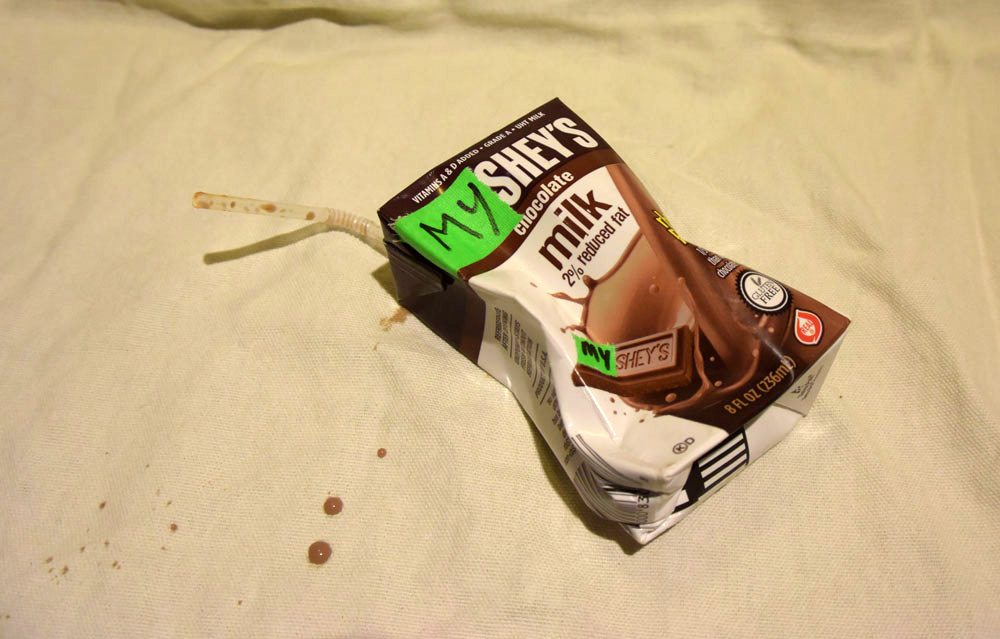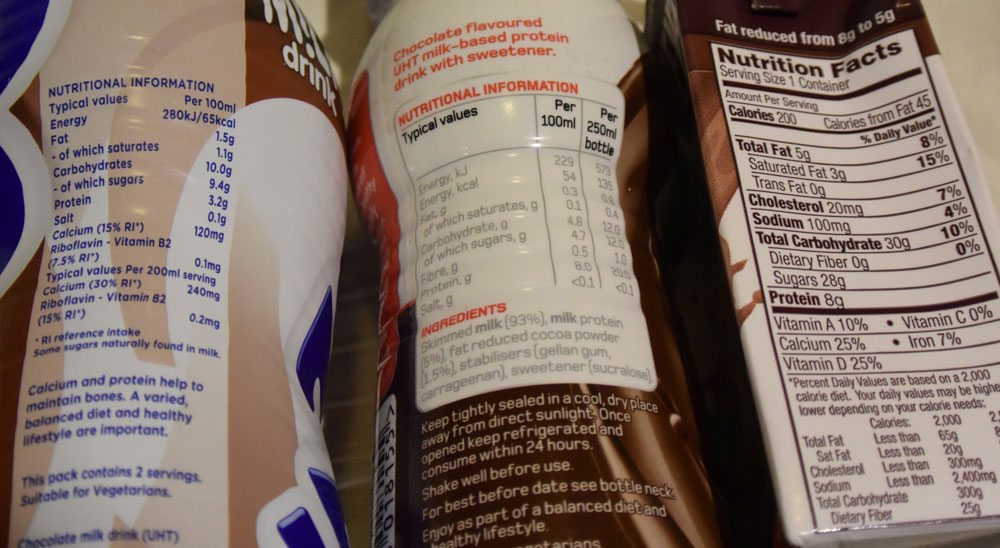Instructor’s phone shows: New text message – “The class was great, but I don’t think I can commit to the training right now.” Cue Instructor wondering why an enthusiastic beginner has given up before they’ve really started. But we know. It’s an open secret. Many, many people drop a new training regime because of muscle pain. Not injury, but the pain known as DOMS – acronym for Delayed Onset Muscle Soreness. They will rarely say so, overwhelmed by a world of Shame/Blame/Pain after finding out that they are not fit as they thought, not as strong, not as tough – what were they thinking of when they tried a Kung Fu class? never mind Tai Chi..(how can that possibly hurt??).
And it’s not only the Beginners. Committed students who have been training for a couple of years can suddenly find it hard going if they are sleep deprived (new baby?), under stress (new job?), or have a change of routine (new house?). And this is where if it works for you, chocolate milk as a recovery drink can get you over this hump.
Does the Chocolate Milk Miracle work for your Delayed Onset Muscle Soreness?
“Oh Yes It Does!”
I know it works for me but I wanted more people to try it. So I gave out samples to people who did the Fundraising Instructor Class and asked for some feedback. I also asked Instructors if any of their students had anything they wanted to add to the discussion by writing to me. After the Fundraising Instructor Class both Joana and Eleanor agree that they were not as sore as they had expected to be…
Eleanor has trained for many years, but had to cut back on some of her training intensity over recent months. So she expected the Instructor Class to be followed by soreness. She wrote the next day “… although my stomach feels pretty bad my legs don’t feel nearly as tired and non compliant as I’d expect them to considering how this was much more exercise than I’ve been able to do for a while. And, I can still lift my baby so my arms aren’t as bad as expected either.”
Joana has been training for a few months now so is not a complete beginner: “I really do think it makes a difference. I didn’t go to the Instructors’ Class the following Sunday but I didn’t take any chocolate milk after my next class and I felt really sore the day after! Which is surprising not only because of the effects of the milk but also because the Instructors’ Class was the most demanding class I’ve ever done.”
That sound like a positive, no?
“Doesn’t make any difference/work for me”.
Daniel’s comment was that it didn’t make much difference the first time he tried, but had a bit more effect the following two Sundays’ training. Daniel trains very consistently, and is on the FWC Kung Fu ‘fairly fit” spectrum. He is also in his early twenties. So his response could come down to a few reasons, and it kind of depends on what you mean by “doesn’t work”. Some people can train pretty hard but don’t suffer from DOMS. So they don’t really need a recovery drink other than water to rehydrate. Also if you are fit enough for the amount of training you are doing then you may not be experiencing much pain and therefore may not feel any benefit from a recovery drink (or you’re not training as hard as you think?).
If you mean that there is no respite from DOMS then perhaps you are not drinking it soon enough after training – it must be within 20-30 minutes of the end of the training session. That’s why I bring the milk to class so I can grab it out of my bag as soon as we finish. I also drink it at room temperature (using a UHT milk). There is a rush of people out of the door at some of our classes to clear the shelves in the local supermarket, and sometimes the time-lag is just too long.
At the end of the day, the main purpose is to reduce post-training pain (DOMS) and if you’ve tried it and it doesn’t work, then fair enough. I can only say it works for me, and after 30-odd years of training pain I’m glad it does.
“It makes me thirsty”.
Rob’s problem with chocolate milk after training is that it makes him really thirsty. I asked him about this and with his working day he finds it a bit tough to eat correctly pre-training and to arrive at class properly hydrated. Now this is a practical issue that many people face and should not be underestimated. It’s all very well to say but it takes planning and it comes down to what you want from your body.
Remember you ask your brain to earn your living and work all day talking to people, and writing emails/code/presentations/scripts/submissions. When you turn up to class it’s the turn of all those unprepared muscles, joints and ligaments to “earn” their place in your life. Do you expect a quill pen and a bottle of ink to write your emails? No, but you will turn up to training after a day of sandwiches and coffee and expect your organic matter to lay down a couple of hours of Tai Chi and Kung Fu. This is a genuine problem, and students have come up with various strategies to deal with it. I think I’ll come back to this as a larger issue to tackle on its own.
But about making him thirsty, then maybe the sweetness is doing this, or maybe Rob needs more water in addition to the chocolate milk. If the latter, then this is fair enough and it is better to drink the correct amount of milk, and then more water than to just keep drinking the milk.
“It works but I think it’s making me fat”.
Ray finds himself training pretty hard, and needing a couple of days to fully recover :”After an intense class my body takes at the very least two days to fully recover (depending on the class intensity, which more often than not is very intense! All part of the fun). With the intake of the extra protein from the chocolate milk, I’ve noticed a significant decrease in recovery time. What usually takes two days now only takes a day at most. I’ve also noticed fatigue and aches aren’t as intense during the one day recovery. Bonus!”
So his chocolate milk intake is helping him with this, but he thinks there may be a downside for him. “Unfortunately, the shortfall of this is a slight weight gain. As someone who seldom eats sugary foods (I don’t even take sugar in my teas!), the glucose from the chocolate milk probably isn’t something my body is used to. The good news is that it’s only a minor amount of weight; about half a kilo. Although minor, if this trend keeps up it will equate to roughly one stone per year!”
Now personally half a kilo would not really register with me but Ray makes a fair point that if this continued he would be over 6kg heavier next summer. I do think I should mention that if Ray is training hard then maybe he is increasing his muscle mass, much as Lucas found during his off-season from cycle training (you can read more about his 5kg muscle gain and it’s impact on his power:weight ratio).
But maybe Ray is correct and he is gaining fat? There are nutritionists who dispute that the additional calories are necessary in a well-balanced diet but I’m not sure how much post-exercise pain they have endured. So it’s one of those situations where it’s up to you. The guideline most of us are working to is 5kCal per kg of bodyweight, and if weight regulation is an issue that you are working on then the inclusion of chocolate milk in your intake should not be ignored.
“It stops me emptying the fridge when I get home”.
Now the appetite-suppressant effect of chocolate milk is indeed one of the reasons that the Cornell University Co-Ordinator of Nutrition was keen on the University’s athletes using it. He saw endless numbers of young students not eating properly during the day, turning up for an afternoon/evening of training hungry and even dehydrated and overeating all night after training. His work included improving the daytime food and liquid intake of the College’s athletes, and then having Chocolate Milk on tap after training so that they did not overload on food overnight.
Radi (who trains with Chief Instructor Dennis Ngo) said that drinking the milk immediately after training took the edge off his hunger so that when he got home he could make a considered decision about what to eat rather than just open the fridge door and demolish whatever was easy until the microwave went “Ping!”. Rob did not find a hunger-control impact from drinking chocolate milk, and so he still has to eat immediately. The impact of skimmed milk in helping with post-exercise eating has however come to the attention of the Scientists (because we know it’s not real until it’s proven).
“It lets me train harder without worrying about Delayed Onset Muscle Soreness too much”.
The Instructors who are using chocolate milk agree on this one. Instructor Dave Courtney Jones has been working on his powerful jumping technique for some months now. Although initially sceptical he now enthusiastically asserts that it does let him push himself harder and harder physically. Instructor Danil Mikhailov says it also acts as a psychological “security blanket” allowing him to worry less about future pain and push his fitness and refine his technique in the more physically demanding patterns. Last week’s cover model, Instructor Richard Wagstaff, has also increased his patterns training in anticipation of an International Competition in November. He admits that he has to watch how he drinks as Summer training tends to dehydrate him faster, so he keeps an eye on intake and drinks water in addition.
So what’s the verdict on chocolate milk as a DOMS-reduction aid?
This turned out to be a mixed story. I know of a number of students who are training pretty hard (within our FWC Kung Fu definition of “hard”) who use chocolate milk for recovery but didn’t write to me about it. If you want it to work for you follow the simple rules of:
- check how much you need (5kCal per kg of body weight), and
- drink it in the 20-30 minute window after bowing to your instructor
then it may revolutionise how you see training, life, and food coming together. The debate continues. And there is no doubt that it is worth having, so watch this space….

